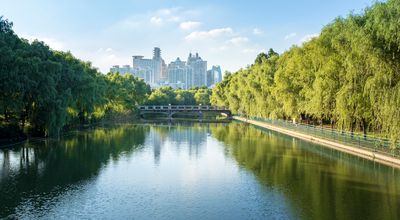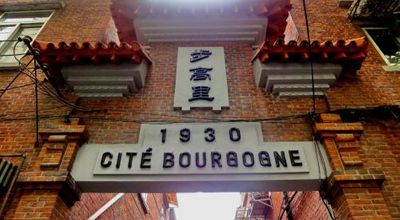Though it may be separated by muddy water from the rest of the Yangpu district, there are a couple of road bridges that connect the two, known as the Hai’an road bridge in the north and the Dinghai road bridge at the tail end of the island. Metro line 12 of the Shanghai subway also has a station there before it crosses the Huangpu river to the other side. Visitors may wish to check before getting on because the station is marked ‘permanently closed’ on Google Maps as of November 2020.
Attractions on the small industrial island include an eponymous park, a white hut or bailu and the tree lined boulevard that is the welcome road when tourists disembark from the metro station. All attractions are free to visit and keep no entrance staff or hours meaning guests can visit whenever convenient.
The road with green sidelines is actually Gongqing road, the main artery of the island which cuts straight through the middle and stretches to either end of Fuxing. Heading north on Gongqing will bring visitors to Fuxing Island Park. The park was built in early 1900s by the Sports Society of the Shanghai Conservancy Board. However, during the war with Japan, it was taken over by them and the Japanese styled it in their own image. Even today the pavilions, stone bridges over small ponds and cherry orchards bring an authentic Japanese-garden feel to this small park. People wanting a Japanese theme to their photoshoots often come to this location to achieve their objective. Though the park is not huge; takes barely 15 minutes to circumvent the area, it is free and has a unique piece of history which makes it interesting. There are two badminton courts within, few stone tables and plenty of winding stone paths. Also erected in memory of the Islands history, is a giant rock at the entrance.
A white cottage sits at the north side of the park. This bailu (literally white hut) has fascinating history. At one point it was built to house leadership of the Japanese military forces occupying the island. Afterwards, it was home to Chiang Kai-shek for less than a month in 1949 before the man took refuge in Taiwan. The Kuomintang leader is rumored to have secret tunnels built-in but those rumors are unfounded yet do make the whole affair more alluring!
Nearby Metro Stations
The following metro stations are within 2km of this attraction:


